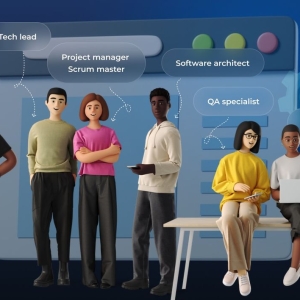In the rapidly evolving landscape of business operations, harnessing the power of Artificial Intelligence (AI) services for enterprise automation has become imperative. The fusion of AI and automation technology is reshaping industries by streamlining processes, increasing efficiency, and driving innovation. This article delves into the key steps to successfully implement Artificial Intelligence services for effective enterprise automation, offering businesses a roadmap to thrive in today's competitive environment.
Understanding Artificial Intelligence Services in Enterprise Automation
Defining AI Services in Automation
Artificial Intelligence services in enterprise automation encompass a range of technologies that enable machines to mimic human cognitive functions, such as learning, reasoning, problem-solving, and decision-making. These services are deployed to augment or replace manual tasks, making business processes smarter, faster, and more reliable.
Key Components of AI Services for Enterprise Automation
- Machine Learning: This subset of AI allows systems to learn from data and improve performance over time without explicit programming. In enterprise automation, machine learning models can make predictions, identify patterns, and optimize processes.
- Natural Language Processing (NLP): NLP enables machines to understand and interpret human language. It is instrumental in applications like chatbots, sentiment analysis, and language translation, enhancing communication and customer interactions.
- Computer Vision: This technology enables machines to interpret and analyze visual information from the real world, making it invaluable for tasks like image recognition, object detection, and optical character recognition (OCR).
Assessing Business Processes for Automation Opportunities
Identifying Repetitive and Rule-based Tasks
The first step in implementing AI services for enterprise intelligent automation is to identify processes that are manual, repetitive, and rule-based. These tasks are prime candidates for automation as they can be efficiently executed by AI-powered systems, reducing the risk of errors and freeing up human resources for higher-value activities.
Evaluating Process Complexity and Feasibility
Not all processes are equally suited for automation. Assess the complexity of each identified process and determine whether it can be effectively automated using available AI services. Processes that involve intricate decision-making or require a high degree of human judgment may require more advanced AI solutions.
Selecting the Right AI Service Providers
Conducting Due Diligence
Choosing the right AI service provider is crucial for the success of your enterprise automation initiative. Conduct thorough research, assess their track record, and request case studies or references to ensure they have the expertise and experience in deploying AI solutions for businesses.
Customized Solutions for Enterprise Intelligent Automation
Look for service providers that offer customized solutions tailored to your specific business needs. A one-size-fits-all approach may not yield the desired results. The provider should be able to understand your unique processes and goals, and offer a tailored AI strategy.
Data Preparation and Integration
Data Collection and Cleansing
High-quality data is the lifeblood of successful AI-driven automation. Collect and clean the data necessary for training AI models. This may involve merging data from multiple sources, removing duplicates, and addressing any inconsistencies or inaccuracies.
Integration with Existing Systems
Ensure seamless integration of AI services with your existing enterprise systems, such as Customer Relationship Management (CRM) software, Enterprise Resource Planning (ERP) systems, and other tools. This integration enables AI-powered automation to work in harmony with your existing infrastructure.
Training and Testing AI Models
Supervised Learning and Continuous Improvement
Utilize supervised learning techniques to train AI models using labeled data. Monitor their performance and continue to refine the models over time to ensure optimal accuracy and effectiveness in automating business processes.
Rigorous Testing and Validation
Thoroughly test AI-powered automation solutions in controlled environments before deploying them in production. This helps identify any potential issues, refine algorithms, and ensure the system operates smoothly in real-world scenarios.
Monitoring and Optimization
Real-time Monitoring
Implement robust monitoring systems to track the performance of AI-driven automation in real time. This allows for immediate intervention in case of any anomalies or performance degradation.
Continuous Optimization
Regularly review and optimize AI models and algorithms to adapt to changing business needs, evolving processes, and new data patterns. This ensures that the automation remains effective and efficient over time.
Conclusion
Implementing AI services for effective enterprise automation is a strategic move that can revolutionize how businesses operate. By understanding the role of AI services, assessing automation opportunities, selecting the right providers, preparing data, and rigorously testing and monitoring the system, businesses can unlock unprecedented efficiency and innovation. With the right approach, AI-powered enterprise intelligent automation has the potential to drive growth, enhance customer experiences, and secure a competitive edge in today's dynamic business landscape.






